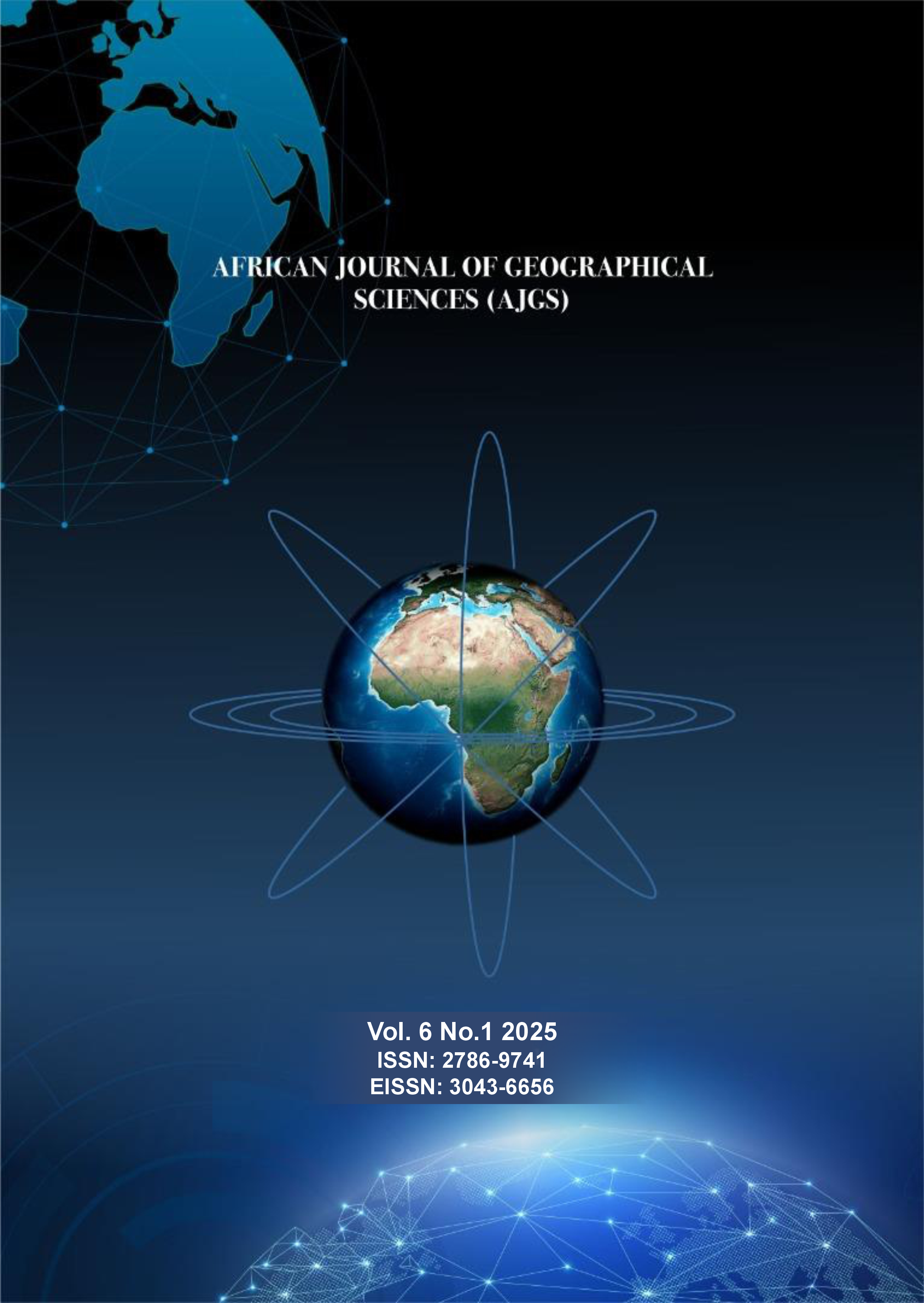INFLUENCE OF CLIMATIC ELEMENTS ON THE INCIDENCE OF MALARIA, MEASLES, MENINGITIS, AND PNEUMONIA IN THE FEDERAL CAPITAL TERRITORY (FCT)
Hauptsächlicher Artikelinhalt
Abstract
The impact of climate variability on human health is a subject of global concern. Climatic and weather conditions, along with other factors, influence the emergence and re-emergence of infectious diseases. Global temperatures are rising, and weather events are becoming more intense, affecting the dynamics of these diseases. This study explores the relationship between climatic elements and the incidence of malaria, measles, meningitis, and pneumonia in Nigeria’s Federal Capital Territory (FCT). The research used secondary data from hospitals and meteorological stations, analyzed using SPSS version 25. A multiple regression analysis was conducted to identify significant climatic influences on disease incidence. The results reveal that malaria incidence has a strong positive correlation with rainfall (81.62%) and relative humidity (76.55%), while it has a very strong negative correlation (-92.28%) with maximum temperature. Measles incidence shows a positive correlation with maximum temperature (84.32%). Meningitis also has a positive correlation with maximum temperature (82%). Pneumonia showed negative correlation relationships with sunshine (26%) and maximum temperature (27%). The study concludes that climatic elements significantly influence the occurrence and seasonal patterns of these diseases in FCT. Recommendations include constructing drainages, promoting the use of treated nets and preventive drugs, encouraging vaccination, and investing in climate change awareness and health education.
Artikel-Details
Literaturhinweise
Adeyemi, A. S. (2000). Climate change and environmental threats. In H. I. Jimoh & I. P. Ifabiyi (Eds.), Contemporary issues in environmental studies. Ilorin, Nigeria: Haytee Publishing Ltd.
Bate, R. (2004). Climate change and mosquito-borne disease: Causal link or green alarmism. American Enterprise Institute for Public Policy Research.
Epstein, P. R. (2002). Climate change and infectious disease: Stormy weather ahead? Epidemiology, 13(4), 373–375.
Intergovernmental Panel on Climate Change (IPCC). (2013). Summary for policymakers. In Climate change 2013: The physical science basis.
Kama, H. G. (2022). Assessment of the relationship between cerebrospinal meningitis outbreaks and climatic elements in Jos North Local Government Area, Plateau State, Nigeria. International Journal of Built Environment and Earth Science, 8(4), 34–45.
Kama, H. G., Marcus, N. D., Hembe, N. D., & Yisa, A. G. (2024). Assessing the incidence trend of malaria, measles, meningitis, and pneumonia in the FCT, Nigeria. Journal of Health, Metabolism and Nutrition Studies (JHMNS), 5(3), 15–32.
Kama, H. G., David, A. I., Emily, I. O., Andy, I. A., & Hembe, N. D. (2024). Examining seasonal variations of disease incidence in the Federal Capital Territory (FCT), Nigeria. Journal of Health, Metabolism and Nutrition Studies, 6(3), 53–68.
Kelly-Hope, L., & Thomson, M. C. (2008). Climate and infectious diseases. Seasonal Journal of Epidemiology, 36(5), 1030–1037.
Koelle, K., Pascual, M., & Yunus, M. (2005). Pathogen adaptation to seasonal forcing and climate change. Proceedings of the Royal Society B: Biological Sciences, 272(1566).
Mabaso, M., Craig, M., Ross, A., & Smith, T. (2007). Environmental predictors of the seasonality of malaria transmission in Africa: The challenge. American Journal of Tropical Medicine and Hygiene, 76(1), 33–38.
Pascual, M., Bouma, M. J., & Dobson, A. P. (2002). Cholera and climate: Revisiting the quantitative evidence. Microbes and Infection, 4(2), 237–245.
Van Lieshout, M., Kovats, R. S., Livermore, M. T. J., & Martens, P. (2004). Climate change and malaria: Analysis of the SRES climate and socio-economic scenarios. Global Environmental Change, 14(1), 87–99.
World Health Organization. (2003). New book demonstrates how climate change impacts health. Geneva: World Health Organization (WHO).
World Health Organization. (2005). Communicable diseases surveillance and response: Protection of the human, roll back malaria. WHO Bulletin, 92(4), 159386–5.
